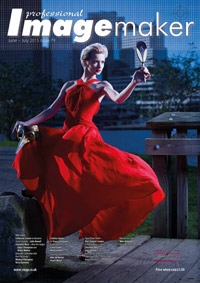articles/Paper/paper-spectrum-page2
The Great Paper Chase - Paper Spectrum Pinnacle Paper Range - part 2 of 1 2 3 4 5 6 7 8 9 10 11
by Mike McNamee Published 01/06/2015
The Test Packs
The test packs split into a 'Photo' series and a 'Fine Art' series and they include some overlaps. These are a useful introduction to the range and with a couple of sheets of each type you can get a feel for what you might like to look at in more depth. The variants are such that you can reduce the options by making up a 'wish list' including criteria for rejecting some options. So, for example, if you are not prepared to tolerate OBAs, the 15 reduces down to just three papers, but if you relax back a little from this then you can pull the barytas and Cotton Rag back into the reckoning. Our job in a review such as this is to present all the data and let you get on with deciding. It is the juggling of all these considerations which make choosing a paper such an absorbing enterprise!
For the purposes of the write-up we have considered the papers to be a continuous series, dividing them initially into those which are matt and require Matt Black ink on an Epson printer and those that require Photo Black ink and are at least slightly glossy, including the barytas. This is an obvious differentiator. Matt surfaces are softer, more absorbent, more easily damaged and often thicker. The combination of matt paper and Matt Black ink creates a smaller gamut, lower Dmax, higher errors in the dark colours and higher metamerism (due to the fully pigmented Matt Black ink). The graph of gamut volumes shows the obvious difference; there is a step-wise change up of about 50% as you change to the Photo Black ink media. The cleverness of the human eye is such that the drop of 50% in the gamut as you move to a matt print is not a 50% reduction in the perceived colour quality. The loss of gamut is mainly in the shadow areas, ie the dark tones; the deepest black will be around 15% for the matt and closer to 3% for the 'gloss' medias. The graphs of 'aim' lightness values against actual print values shows a droop at the shadow end - the lighter tones and pastels are hardly affected. This general compression of gamut does, however, result in a higher error in the saturation channel of the colour - the ΔC/w value in our audit tables.
Please Note:
There is more than one page for this Article.
You are currently on page 2
- The Great Paper Chase - Paper Spectrum Pinnacle Paper Range page 1
- The Great Paper Chase - Paper Spectrum Pinnacle Paper Range page 2
- The Great Paper Chase - Paper Spectrum Pinnacle Paper Range page 3
- The Great Paper Chase - Paper Spectrum Pinnacle Paper Range page 4
- The Great Paper Chase - Paper Spectrum Pinnacle Paper Range page 5
- The Great Paper Chase - Paper Spectrum Pinnacle Paper Range page 6
- The Great Paper Chase - Paper Spectrum Pinnacle Paper Range page 7
- The Great Paper Chase - Paper Spectrum Pinnacle Paper Range page 8
- The Great Paper Chase - Paper Spectrum Pinnacle Paper Range page 9
- The Great Paper Chase - Paper Spectrum Pinnacle Paper Range page 10
- The Great Paper Chase - Paper Spectrum Pinnacle Paper Range page 11
1st Published 01/06/2015
last update 09/12/2022 14:57:21
More Paper Articles
There are 22 days to get ready for The Society of Photographers Convention and Trade Show at The Novotel London West, Hammersmith ...
which starts on Wednesday 14th January 2026





